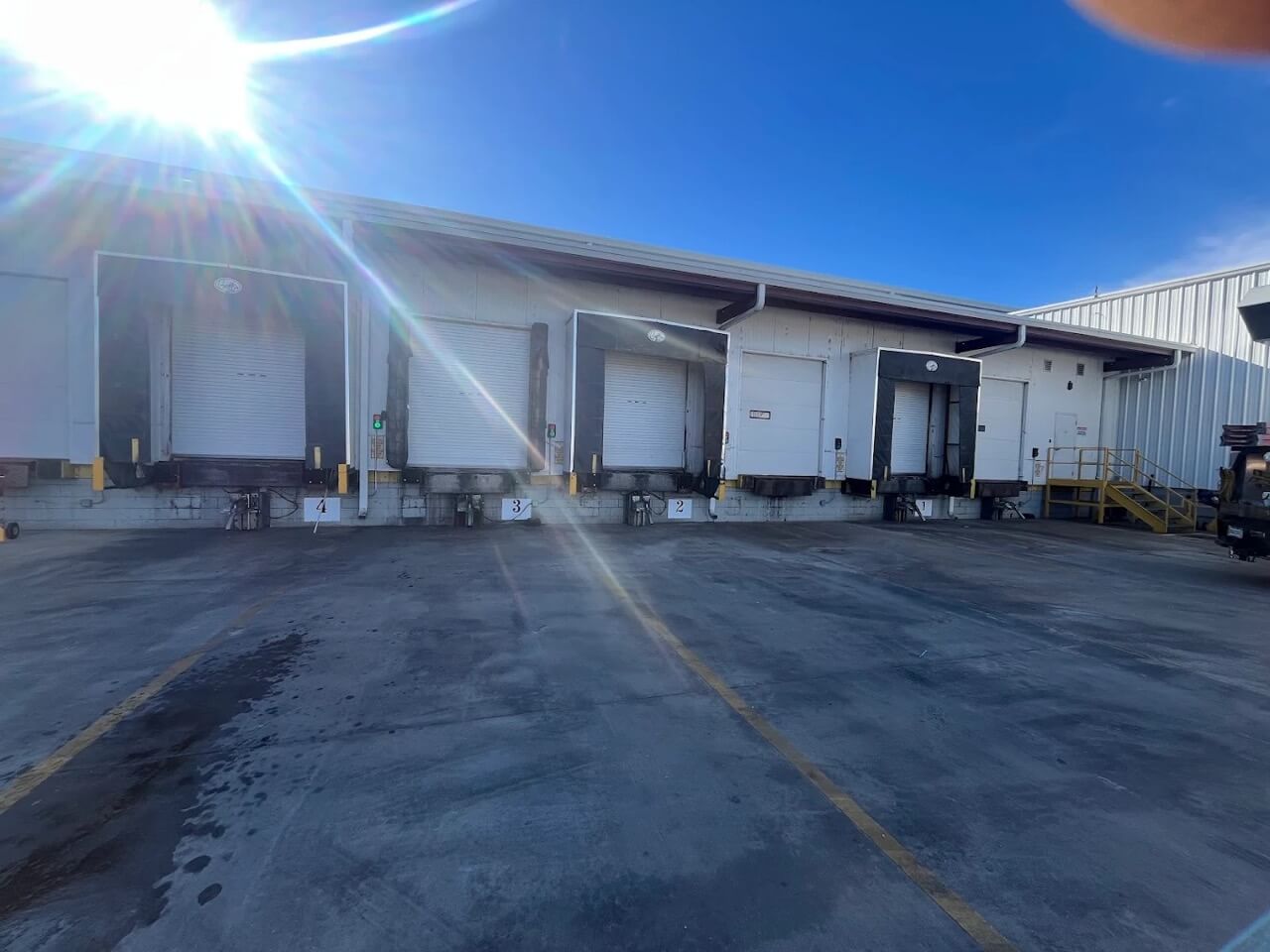Loading docks are critical areas in any warehouse, but they can also be hazardous if proper safety measures are not followed. This guide offers essential loading dock safety tips to maintain a safe warehouse environment, thereby protecting your workers and enhancing productivity.
Understanding Loading Dock Safety
Importance of Loading Dock Safety
Loading docks serve as essential hubs for the movement of goods in manufacturing plants, warehouses, industrial buildings, and distribution centers. This is often the primary location where products enter and exit a facility, making the loading dock area a crucial part of the operation. However, this bustling activity also presents significant risks. The loading dock area can be a potentially dangerous place for anyone working in or around it. Prioritizing loading dock safety is vital for maintaining smooth operations and preventing accidents, making loading dock safety tips invaluable.
Common Hazards at Loading Docks
Loading dock environments are among the most hazardous areas in warehouses, distribution centers, and other facilities involved in loading and unloading operations. Regular inspections are crucial for identifying potential safety hazards. Some common hazards and their causes are summarized in the table below.
| Hazard Type | Possible Causes |
|---|---|
| Slips, Trips, and Falls | Floor conditions, poor housekeeping, dock edge |
| Powered Industrial Truck Incidents | Forklifts overturning, collisions with pedestrians |
| Other hazards | Trailer creep, movement of unsecured loads, workers being struck, back injuries from improper lifting, inadequate visibility |
OSHA Requirements for Loading Docks
The Occupational Safety and Health Administration (OSHA) plays a crucial role in regulating workplace safety, including warehouse loading docks. According to Industrial Safety & Hygiene News, 25% of all industrial accidents occur at the loading dock. To address this, OSHA requires operators of powered industrial trucks to have their performance evaluated at least once every three years. Refresher training is required when evaluations reveal deficiencies, after accidents or unsafe operations, or when workplace conditions change. OSHA also provides checklists for various types of powered vehicles, such as electric and propane forklifts, to help prevent accidents and promote worker safety in the loading dock area.
Best Practices for Loading Dock Safety
Safety Checklist for Loading and Unloading
Following a detailed safety checklist for loading and unloading is paramount for worker safety. Unloaders should take specific precautions, including:
- Ensuring the dock area is free of safety hazards such as debris or spills before work begins.
- Using trailer restraints or wheel chocks before unloading operations commence, to help prevent unexpected trailer movement.
Ensure each pallet is secure and balanced to prevent accidents during movement in the warehouse. The daily inspection of loading dock safety ensures all equipment is functional.
Forklift Safety Measures
Forklift safety is essential in loading dock environments. Properly trained and certified forklift operators are a must. To prevent accidents, it’s vital to observe key safety practices, including:
- Slowing down at intersections and using the horn.
- Making wide, controlled turns.
Maintaining a safe speed and being aware of pedestrian traffic are also key to improving safety within the busy warehouse environment. Ensuring that forklift operators adhere to these safety procedures can significantly reduce the risk of collisions.
Visibility Enhancements for Dock Workers
Improving visibility for dock workers is essential for loading dock safety. Proper lighting should be installed throughout the dock area, both inside and outside the warehouse, to ensure dock workers can clearly see their surroundings. Floor markings, like yellow tape or paint, should be used to identify walkways, doorways, and potential obstructions. Painting the edge of the dock a reflective yellow improves visibility, marking the edge of the loading dock. These best practices help prevent slip and fall protection hazards.
Equipment and Tools for Safety
Using Safety Gates and Restraints
Implementing safety gates and restraints is crucial for improving loading dock safety. This equipment acts as a physical barrier to help prevent falls from the dock edge, especially when dock doors are open and no trailer is present. Ensure restraints are used on every vehicle to help prevent trailer creep. To prevent accidents during loading and unloading operations, use trailer restraints or wheel chocks before work begins. Regularly inspect and maintain this safety equipment to ensure it functions effectively.
Implementing Wheel Chocks
Using wheel chocks is an essential safety practice for improving loading dock safety. Wheel chocks are used to secure trailer wheels during loading and unloading to help prevent unwanted movement. Wheel chocks reduce the risk of trailer creep, ensuring a safer environment for warehouse workers and dock workers. To prevent accidents, use trailer restraints or wheel chocks before loading and unloading work begins. Regularly inspect wheel chocks for wear and damage, replacing them as needed.
Choosing the Right Loading Dock Equipment
Selecting the right loading dock equipment is vital for ensuring loading dock safety and productivity. Ensure that dock plates and boards are designed for the loads and forklift trucks used. Dock levelers should be selected to accommodate the height differences between the warehouse floor and trailer beds. Ensure that equipment meets OSHA requirements and is regularly inspected and maintained. Investing in high-quality loading dock equipment not only enhances safety but also streamlines operations.
Safety Training and Worker Awareness
Conducting Safety Training for Warehouse Workers
Effective safety training is essential for all warehouse workers involved in loading and unloading operations. Loading dock safety is paramount, and comprehensive safety training programs should cover dock safety protocols and OSHA requirements. All personnel should be trained in dock safety and safety procedures enforced. Training should also include the proper use of carts, pallet jacks, and team lifts, ensuring warehouse workers know their physical limits to help prevent injuries.
Prioritizing Safety Practices Among Dock Workers
Prioritizing safety practices among dock workers is crucial for maintaining a safe loading dock environment. Pedestrians must be mindful and cautious, aware that powered industrial trucks may not always yield to them. To prevent accidents and slip and fall protection hazards, only documented OSHA-trained and authorized employees should operate pallet jacks or forklifts. Encourage a culture where employees feel comfortable speaking up if equipment isn’t working correctly or if tasks feel unsafe.
Regular Safety Audits and Training Updates
Regular safety audits and training updates are key to maintaining a high level of loading dock safety. OSHA requires continuous safety improvement of safety protocols and ongoing training, which reinforces safety procedures and refreshes hazard awareness. This approach also allows for the sharing of lessons learned across the team. Safety training should include updates on OSHA requirements and best practices to keep warehouse workers informed and prepared.
Improving Loading Dock Safety
Strategies to Prevent Accidents
Implementing effective strategies is vital to prevent accidents and improve loading dock safety. Protecting pedestrians by ensuring they are aware of powered industrial trucks in use is paramount. Placing padding or guards around sharp corners and dock barricades on open dock edges is essential. Prohibit dock jumping to help prevent ankle, knee, and back injuries. Always ensure dock levelers are returned to the stored position after use, and provide a dock seal to keep rain and snow, which can cause slip and fall protection hazard, off loading docks.
Creating a Safe Loading Bay Environment
Creating a safe loading bay environment is crucial for ensuring worker safety and productivity. Implement an inspection program to review palletized materials to help prevent safety hazards and improve loading dock safety. Adjust the height of conveyors to eliminate lower back stress, and place heavier products at levels between the knees and chest. Limit the amount of weight a worker must carry and allow for assisted lifting. Install guards on conveyor sprockets, gears, and rollers, and ensure proper illumination.
Continuous Improvement of Safety Protocols
Continuous improvement of safety protocols is essential for maintaining a safe and efficient loading dock environment. OSHA requires that safety measures be ongoing and not just a one-time effort. Regularly review and update safety practices based on incident reports, OSHA requirements, and feedback from dock workers. Encouraging a culture of continuous improvement ensures that warehouse environments remain safe and compliant with the latest best practices and regulations.





